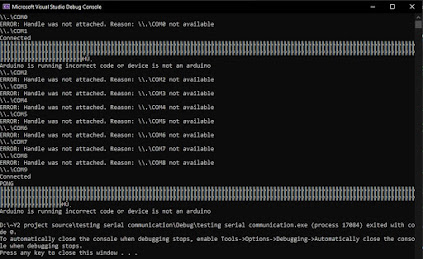Week 4 summary
In week 4, we were mainly making small changes to our code for the bench inspection. Heres Erik's summary for week 4 During testing the communication after connecting the computer and Arduino, I discovered that at seemingly random points the Arduino would be reset and the rest of the program break as a result. I believe the cause of this issue is that the destructors for the ‘SerialPort’ objects are called once functions end. This issue could not be fixed in time for bench inspection, so instead of having the game code and arduino code interface with each other, they will both run independantly and the user will use the arduino to read the voltage and confirm its correct, then use the game code to input the resistance value and move onto the next level. Adams progress for week 4: After the change in functionality because of the communication code not working, we decided to have th game code and arduino code run independantly. I had to modify the game code to prompt the user...

